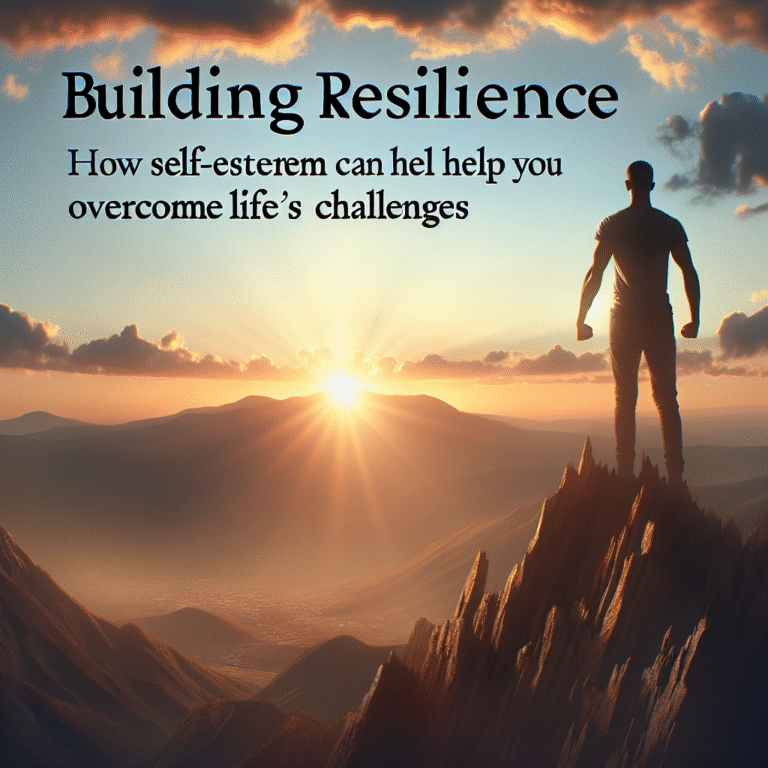
Introduction
In today’s fast-paced world, where digital interactions often overshadow meaningful human connections, the importance of belonging cannot be overstated. The Power of Connection: How a Sense of Belonging Shapes Our Lives goes beyond mere social interactions; it resonates deeply within us, shaping our identities, influencing our mental health, and determining our overall well-being. Imagine a life where you feel valued, understood, and part of something greater than yourself. This article delves into how fostering a sense of belonging enriches our lives, drawing on research, case studies, and insightful anecdotes to illustrate its undeniable power.
The Science of Belonging
Understanding Belonging
At its core, belonging is a fundamental human need, akin to food and shelter. Psychologist Abraham Maslow positioned it within his hierarchy of needs as a vital component of self-actualization. Essentially, the more we feel we belong, the more secure and self-confident we become. According to a study by the University of California, belonging is crucial for our psychological health, with lonely individuals experiencing higher rates of anxiety and depression compared to their socially connected counterparts.
Case Study: The Ripple Effect of Belonging
Consider the case of a high-performing tech company, XYZ Corp, which implemented a new employee engagement program focused on team bonding and collaboration. Following the initiative, employee turnover dropped by 30%, and productivity soared by 20%. Surveys indicated that team members who felt a strong sense of belonging were more likely to share ideas, support one another, and contribute to a positive workplace culture. This transformation exemplifies The Power of Connection: How a Sense of Belonging Shapes Our Lives, showcasing how it can elevate not only individual well-being but also collective performance.
Belongingness vs. Loneliness
The contrast between belongingness and loneliness highlights the importance of connection. According to research published in the Journal of Personality and Social Psychology, individuals who feel socially connected have better mental and physical health outcomes. Loneliness, on the other hand, can lead to increased inflammation, higher cortisol levels, and even a higher risk of mortality.
| Statistic | Connected Individuals | Lonely Individuals |
|---|---|---|
| Happiness Level | High | Low |
| Stress Levels | Low | High |
| Physical Health (Self-rated) | Good | Poor |
| Life Satisfaction | High | Low |
| Risk of Mortality | Lower | Higher |
The data is compelling; when people feel they belong, they thrive, suggesting that our social environments play a pivotal role in shaping our realities.
The Role of Community
Building Connections Through Community Engagement
One of the most powerful ways to foster belonging is through community engagement. Volunteering, participating in local events, or joining clubs can create networks of support that contribute to an individual’s sense of connection. A nationwide study found that people who actively engaged in their communities reported feeling more fulfilled and satisfied with their lives.
Case Study: The Power of Collective Action
In 2020, during the COVID-19 pandemic, communities worldwide banded together to support one another through various initiatives, from grocery delivery services for the elderly to neighborhood check-ins. An analysis of community response in a small town in Ohio showed that residents who engaged in these acts of kindness reported lower levels of anxiety and depression. The mutual support and shared goals created a powerful sense of belonging that significantly improved overall mental health. This is a testament to The Power of Connection: How a Sense of Belonging Shapes Our Lives through community ties.
The Impact of Belonging on Education
Educational institutions are another critical area where belonging can make a substantial difference. Research indicates that students who feel connected to their schools tend to perform better academically and socially. A sense of belonging improves motivation, reduces dropout rates, and enhances classroom participation.
| Educational Outcomes | Students with Connection | Isolated Students |
|---|---|---|
| Academic Performance | Improved | Diminished |
| School Attendance | Higher | Lower |
| Peer Relationships | Stronger | Weaker |
These findings underscore how fostering a sense of belonging in educational settings can catalyze positive outcomes for students, enhancing both their academic and personal growth.
The Workplace: A Microcosm of Connection
Enhancing Workplace Culture
In the workplace, a culture of belonging can transform environments. Companies that prioritize inclusivity and connection report higher employee engagement and lower turnover rates. The Power of Connection: How a Sense of Belonging Shapes Our Lives is vividly illustrated in corporate settings like Google, which has implemented various initiatives to enhance employee connection, such as mentorship programs and diversity training.
Case Study: Google’s Diversity Approach
Google’s focus on creating a diverse and inclusive workplace has resulted in a measurable impact. Their annual employee surveys highlight that individuals who feel included are more innovative and collaborative. This sense of belonging translates into increased creativity and problem-solving abilities, affecting the company’s bottom line.
The Cost of Disconnection
On the flip side, companies that neglect to nurture connection and belonging risk fostering a toxic culture. Gallup’s research shows that disengaged employees cost organizations between $450 billion to $550 billion annually in lost productivity. This stark statistic illustrates the importance of addressing belonging in the workplace.
Connection in Crisis: The Importance of Belonging During Tough Times
Mental Health and Support Networks
In times of crisis, belonging becomes even more critical. Social support networks can function as a buffer against mental health challenges. Researchers from the University of Bristol found that individuals with strong social ties were better able to weather the emotional storms during events like the pandemic or natural disasters.
Case Study: Community Resilience in Crisis
During the 2017 hurricanes that devastated parts of the United States, local communities displayed extraordinary resilience. Neighbors helped each other rebuild homes, share resources, and provide emotional support. A report by the Harvard School of Public Health indicated that these community bonds reduced stress and anxiety levels among those affected, evidencing The Power of Connection: How a Sense of Belonging Shapes Our Lives in rebuilding social infrastructure.
Supporting Mental Health Through Connection
The role of belonging is equally vital in the realm of mental health support. Group therapy and peer support initiatives have proven effective in helping individuals cope with mental health challenges. Support groups provide a safe space where individuals can share experiences, fostering a sense of belonging that reduces feelings of isolation and hopelessness.
The Personal Journey: Fostering Connection in Our Lives
Building Authentic Relationships
To cultivate a sense of belonging in our lives, it is essential to nurture authentic relationships. This process involves being vulnerable, actively listening, and investing time in the people who matter to us. Genuine connections are built on empathy and trust, creating a solid foundation for belonging.
The Role of Technology
While technology has reshaped how we connect, it holds both opportunities and challenges. Social media can foster connections and provide platforms for communities to thrive. Yet, it can also lead to superficial relationships and increased feelings of loneliness. The key lies in leveraging technology mindfully, using it to enhance our connections rather than replace real-world interactions.
Inspirational Practices to Foster Connection
Here are a few practices to enhance a sense of belonging:
- Participate in Group Activities: Join clubs, sports teams, or volunteer organizations to meet new people and forge connections.
- Host Social Events: Whether it’s a dinner party or a game night, gathering friends and family fosters community.
- Be Open and Vulnerable: Share your feelings and experiences with others; vulnerability attracts deeper connections.
Conclusion
The Power of Connection: How a Sense of Belonging Shapes Our Lives is not merely an abstract concept; it is a vital force that influences every aspect of our existence. From enhancing personal relationships and academic performance to improving workplace dynamics and supporting mental health, belonging enriches our lives in immeasurable ways.
As we navigate our complex world, let us prioritize connection and foster environments—be it in our communities, workplaces, or personal lives—where everyone feels valued and included. By embracing our shared humanity and building authentic connections, we pave the way for a more compassionate and fulfilling world.
FAQs
What is the psychological importance of belonging?
- Belonging is crucial for mental health, serving as a buffer against anxiety and depression, reinforcing our sense of self-worth.
How can I enhance my sense of belonging in a new community?
- Engage in local events, join clubs or groups that align with your interests, and actively reach out to neighbors to establish connections.
Can belonging positively affect workplace productivity?
- Absolutely! Organizations that promote belonging see improved employee engagement, creativity, and overall productivity.
Is there a way technology can improve my sense of belonging?
- Yes! Use social media and online platforms to connect with like-minded individuals but balance it with face-to-face interactions.
- What are some signs that I might lack a sense of belonging?
- Feelings of loneliness, difficulty forming relationships, and low self-esteem are common indicators that one might be struggling with a sense of belonging.
Remember, fostering a sense of belonging is an ongoing journey, one that is deeply rewarding and immensely impactful. Let’s take proactive steps to build connections that truly matter.
















